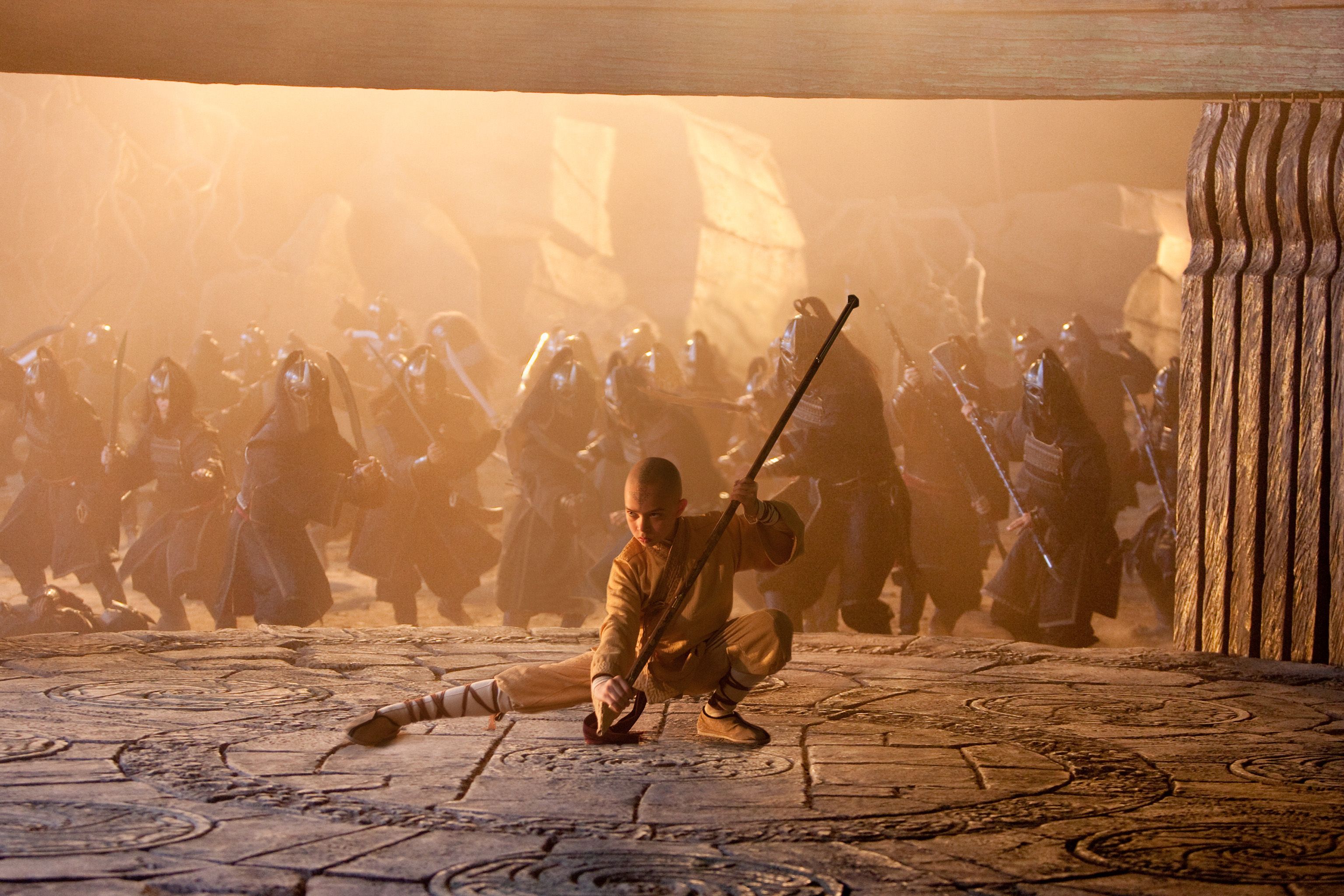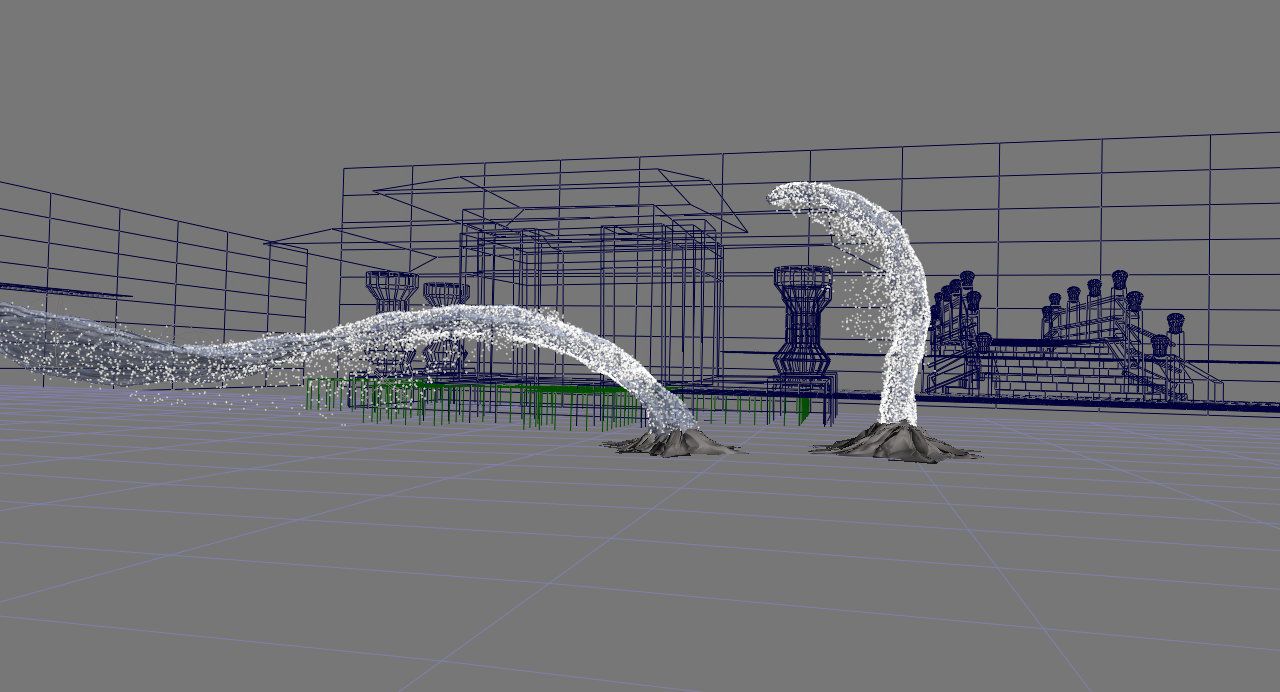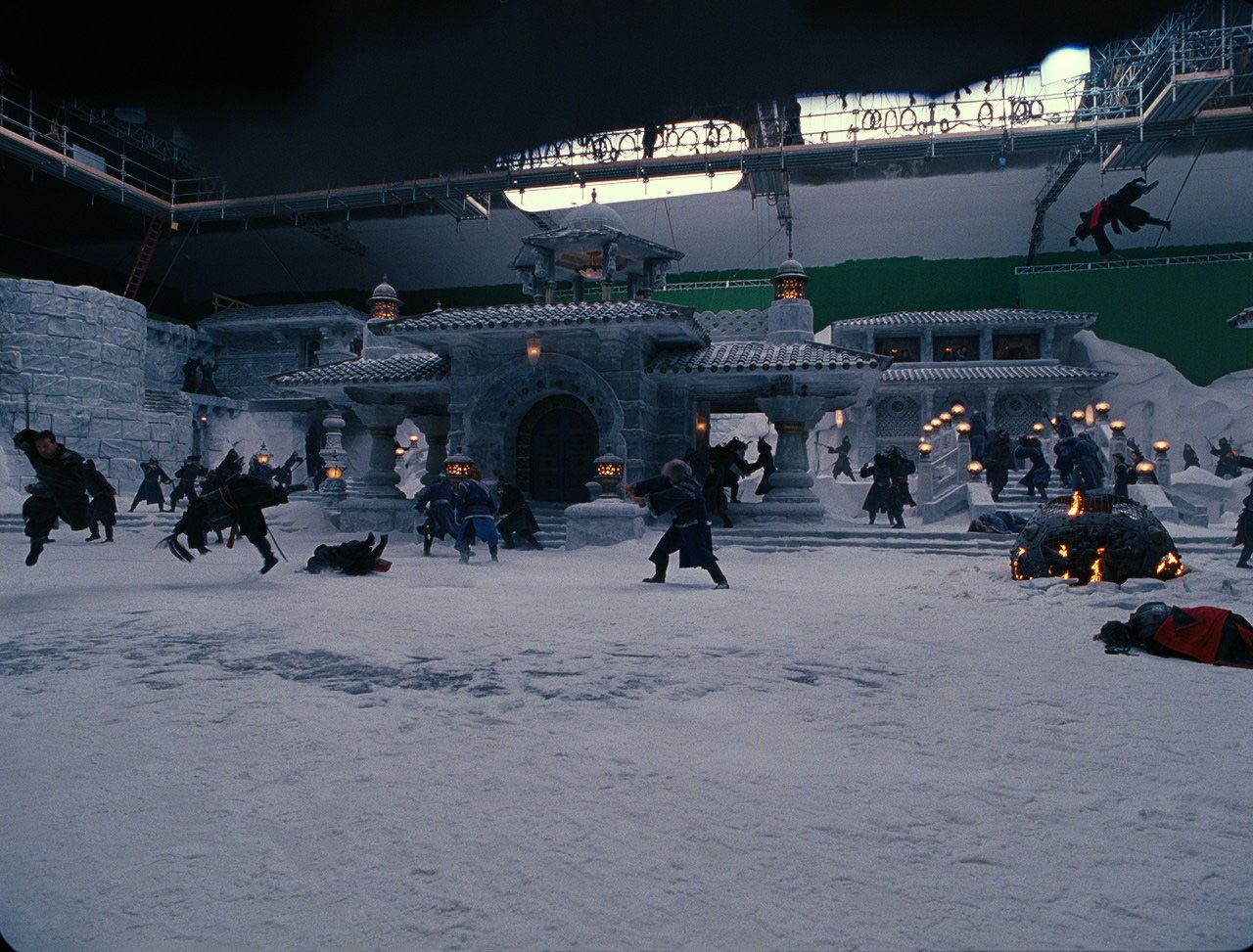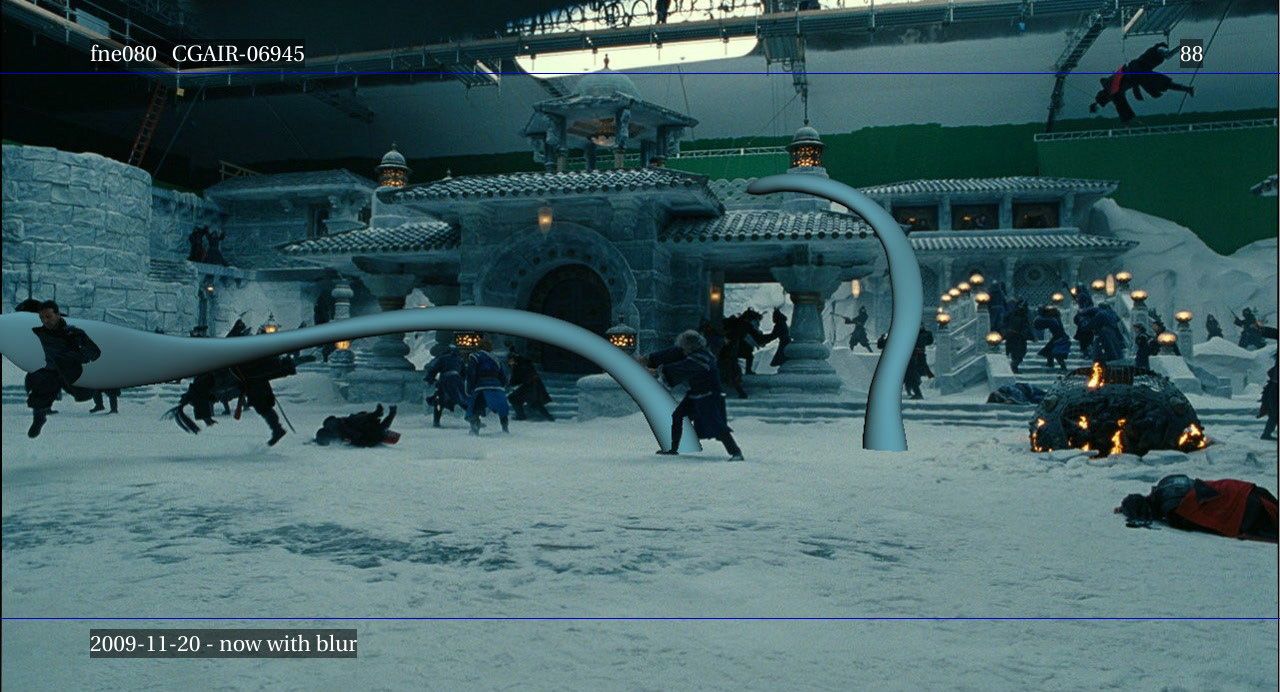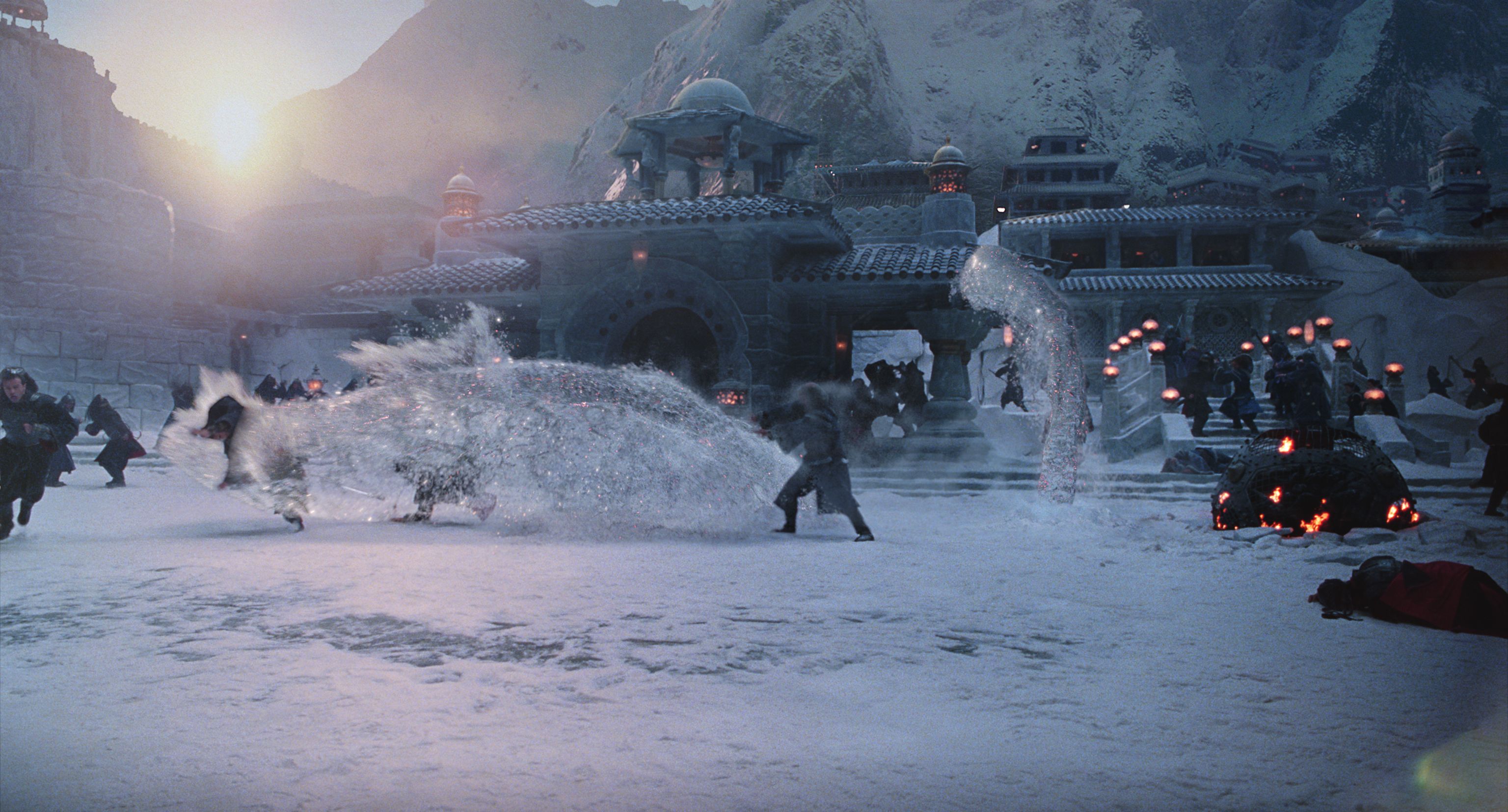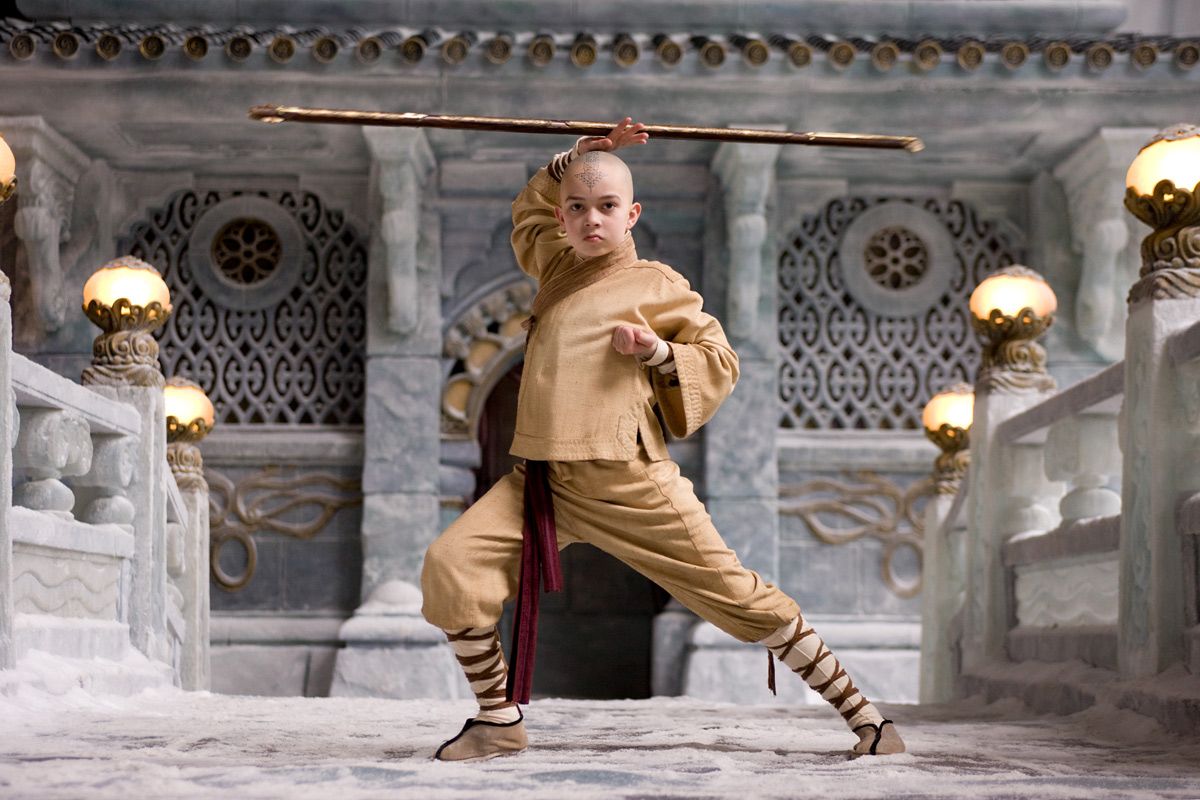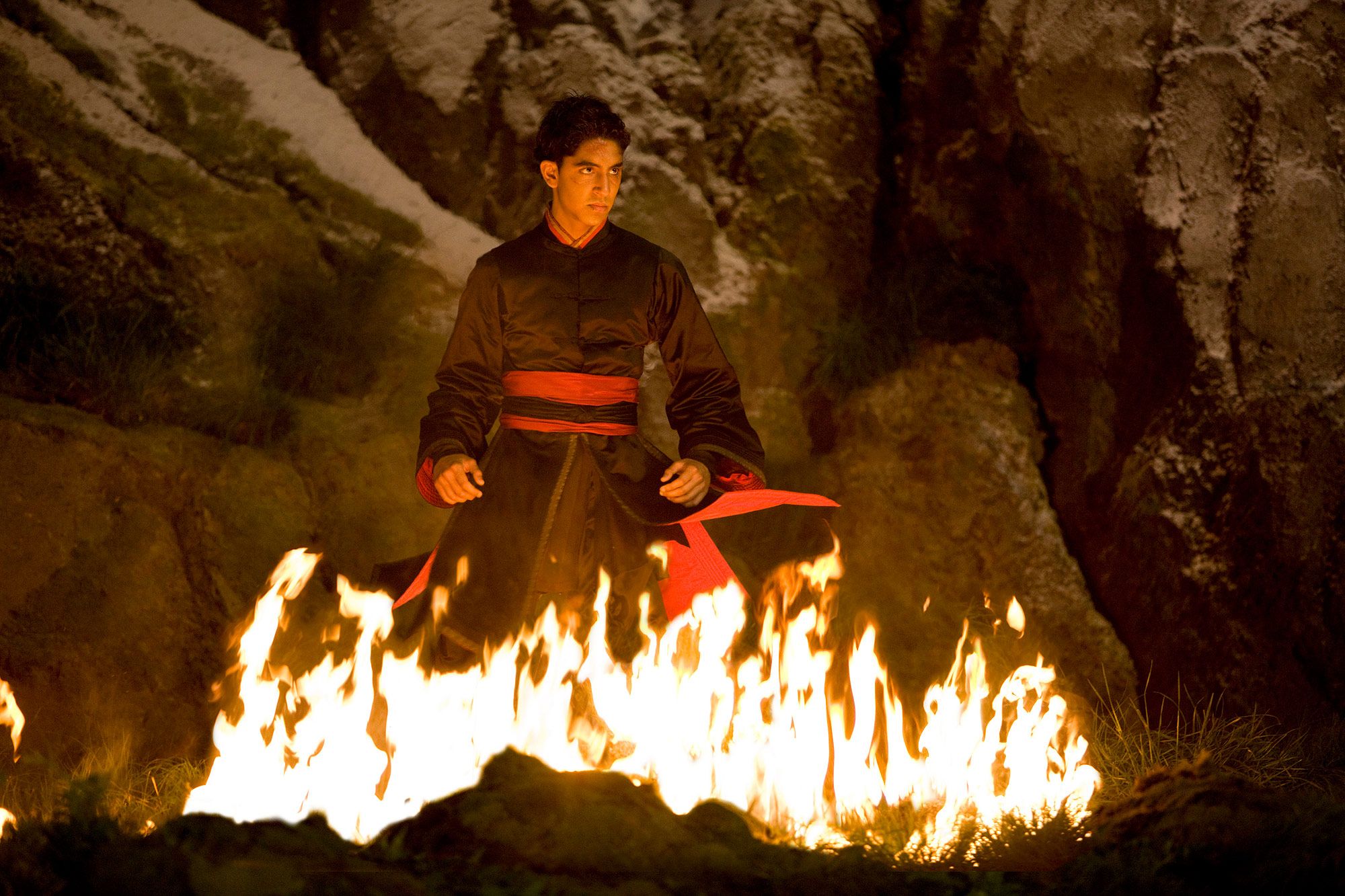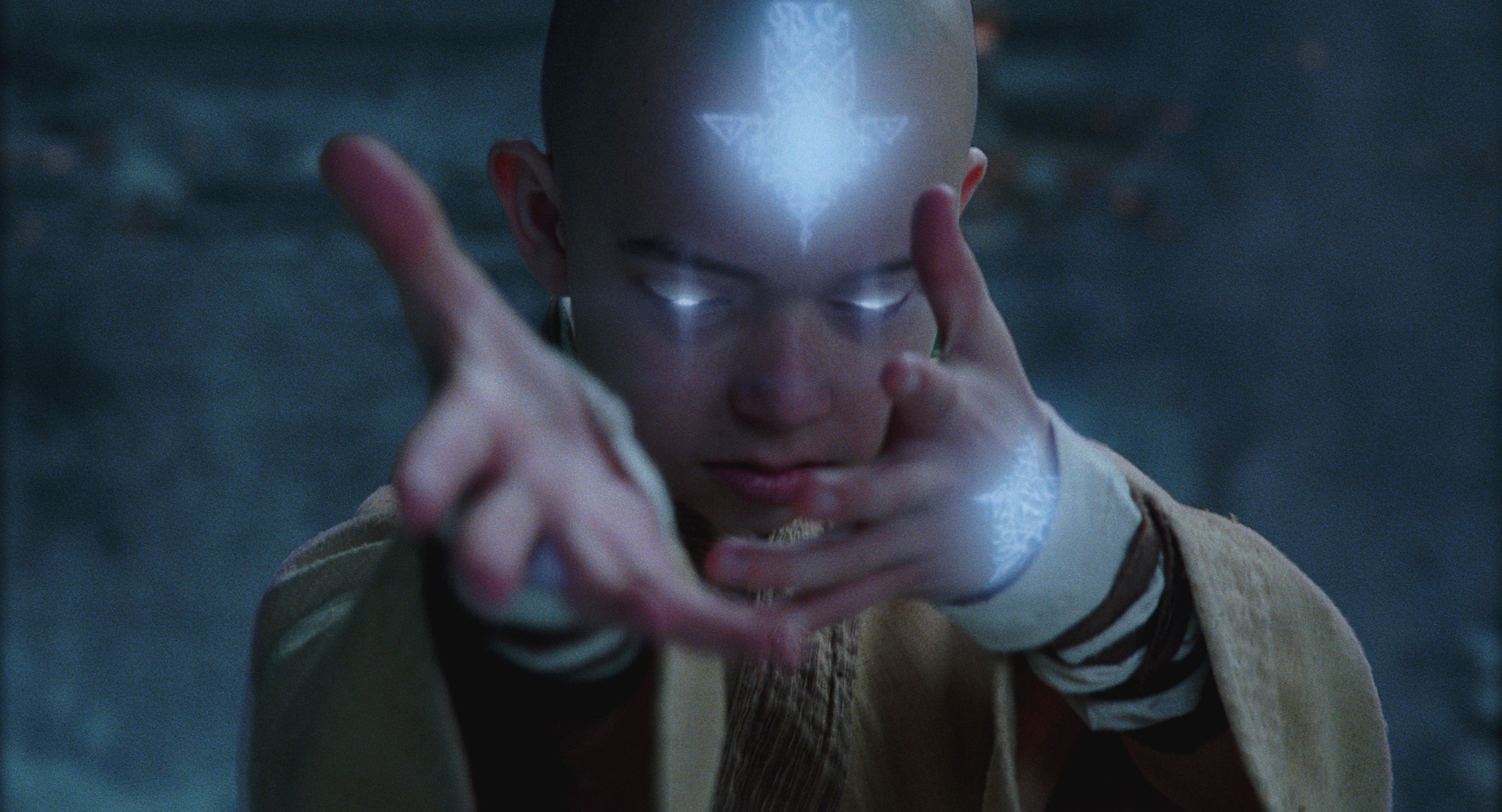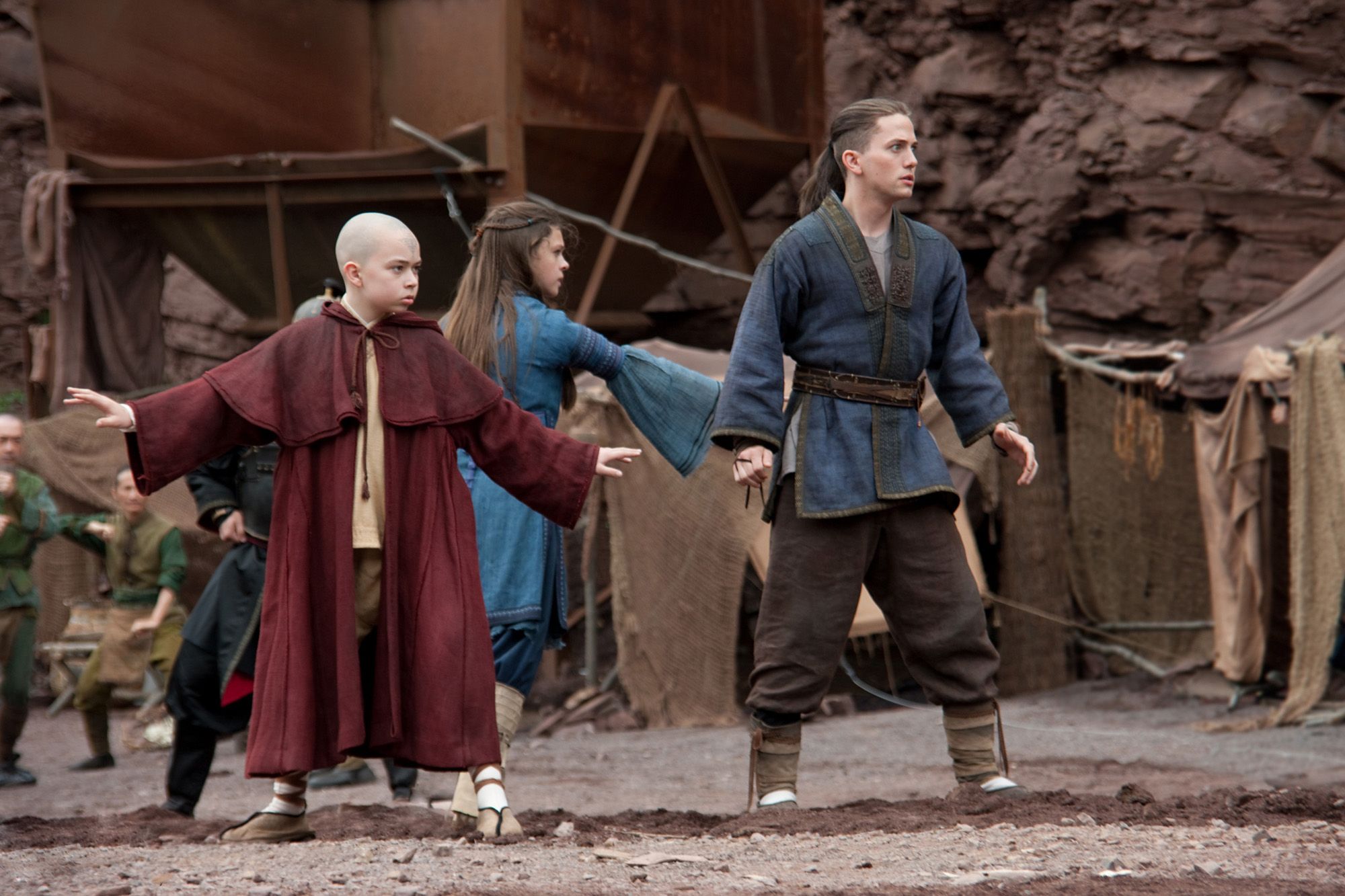We visit the San Francisco special effects house to talk with the main visual effects players for the film
One of my career highlights thus far was getting to visit Industrial Light and Magic back in 2008 to chat with some of the visual effects wizards behind the blockbusters Iron Man and Indiana Jones and the Kingdom of the Crystal Skull. While getting a chance to speak with these effects gurus was truly an honor, I was even more thrilled just to get a chance to walk on these hallowed grounds where the special effects for so many movies were created (CLICK HERE and CLICK HERE to read my two-part piece on my first visit to ILM).
I was honored a second time back in April to visit ILM once again, this time to chat with those in charge of the effects for the upcoming M. Night Shyamalan film, The Last Airbender, which arrives in theaters nationwide on July 1. We were greeted at ILM by one of the men we chatted with on my first ILM visit, Pablo Helman, who served as the visual effects supervisor on Indiana Jones and the Kingdom of the Crystal Skull and again on The Last Airbender. Helman gave us an early look at the new trailer before it was released online - which I was quite impressed with, and he then went on to chat with the press group about his experiences on the film.
Pablo Helman:
Can you talk about the technical and procedural leaps forward. What did you feel you needed to create this film, or were you able to work from a library that ILM already had?
Pablo Helman: Here at ILM, we love to work on stuff that has never been done before, so when you start a project, you have to develop the technology yourself. We did have to develop new techniques and new software and hardware to do things like bending the fire and bending the water. It allows you to preview the work you're doing very very quickly, so that is one of the things. Being able to render the fire in hardware allowed us to get a lot more iterations throughout the day and be able to see what it is that we're doing.
Were you guided aesthetically by the animated show or did you have to come up with a new look because it's live-action?
Pablo Helman: I think we did both. We were really faithful to the show, but also, Night's aesthetic is different in that he wanted to show this as realistic. How do you make it look really realistic and make it behave in a completely different way? If you think about how do we, as people, judge how something is real, it's by how it looks. We can make it look like fire, but if it behaves in a certain way, you're going to say, 'Well, that doesn't look real,' so it's a very fine line.
M. Night Shyamalan has had special effects in his movies before but this is a big leap for him, where it seems every shot has a visual effects element to it. Can you talk about the guidance you had to give to him about the visual effects?
Pablo Helman: I remember the first meeting we had with Night, he gave us a big book with the whole movie storyboarded. It was great that he was completely engaged, but 50% of what he was shooting was not going to be on the set, so some of the timing had to change, but his vision was right there and he knows where he's going. The only thing we had to work out is what the process was going to be. The visual effects process is completely the opposite of a director's process. The director wants all the control and we in visual effects want all the control. That's why we shoot on blue screens or green screens to separate everything. But, I have to say that Night was able to work with the process really well and was able to make decisions on what he would see in animation about what it was going to be. That is a very good thing.
The film already has a very dedicated audience going in. What particular elements of the series did you look at and were there any specific episodes you might have referenced?
Pablo Helman: I think that the opening of the movie is going to be reminiscent of the cartoon. In every one of the episodes, there was that exposition of something that will happen through the whole story, and that was something that Night wanted to put in. A lot of the elements in the movie are there. The creatures Appa and Momo are there and Aang's relationship with Katara and her brother and there's also the element of the dragon and the spiritual world. The show has a very spiritual, energy-driven aesthetic and that's in the movie too.
You talked about bending the fire before, so was that the most difficult of the four elements to bend or were the rest difficult? Also, is Momo completely CG or is he a puppet of some sort?
Pablo Helman: I think fire and water were the most difficult ones, because of how familiar we are with fire and how Night wanted this element to look completely realistic. Sometimes we'd do 60 or 70 takes. That's kind of a lot. It was something where Night was directing, just how he would direct actors. Earth was difficult also because it was all particle work and air, we all kind of had to discover it. Nobody really knew what that was going to look like. Was it going to be smoky? Were we going to distort the background? Momo was pure CG, although we did have a maquette of the actual creature and we also had some blue-screen bags that the actor would carry around, just to have an idea of the weight and position.
After Helman spoke to us we were introduced to the art director Christian Alzmann and digital matte artist Barry Williams, who showed us a few concept art images, which showed us some of the initial sequences of the bending, particularly an amazing waterbending shot. You can take a look at four images which show the step-by-step process that goes into a complex shot like this.
After showing us a number of images and step-by-step videos like the images above, Alzmann and Williams also talked a bit about the influences they took in creating some of the environments in the film.
"It's mainly focused on a lot of different groups," Williams said. "There's the Southern water tribe, Northern water tribe, the Fire nation, Southern air temple, Northern air temple, each with its own identity or sense of character. We put a lot of work in ahead of time to figure out what this architecture might look like."
"For the temples, we would send people to real-world locations to actually photograph real temples and we would use those for a base for our temples," Williams said. "Such a focus on this show is the realism of these environments."
They also told us that each of these temples were originally designed so that only members of that bending tribe could access them.
"A lot of these, like the air temple, they're on the precipice of this mesa of rock that only a bender could get to, and obviously that's what sets them apart," Alzmann said. "When the fire nation took them over, they're into industry to they built these steel bridges to get out to the temples."
Alzmann also told us that they all watched, "at least the first season," of Avatar: The Last Airbender animated series, which he said, "it was good, so it wasn't hard homework to do." He also talked about how the movie is a lot darker than the animated series.
"Night always used the word 'masculine' in adding this dark edge to stuff," Alzmann said. "In animation, you can get away with a lot, but to give it an edge and a realistic edge, I think he was always pushing us to make it more ominous."
After chatting with Alzmann and Williams, we met associate visual effects supervisor Craig Hammack and digital production supervisor Daniel Pearson, who took us through the effects of the film. One of the more interesting things we learned from this duo is how Shyamalan actually changed part of the nature of the fire nation. In the original animated series, the firebenders could create fire completely on their own, but in this film, the firebenders can't actually create the fire themselves and need a source of fire to manipulate.
"For fire, Night kind of changed the rules a little bit," Hammack said. "In the cartoon, the firebenders can manifest fire from their own energy, but in the movie, they need an actual source to pull it from. We ended up populating a lot of scenes with fire pots."
When asked why Night chose to create this new rule for the firebenders, they weren't exactly sure why the decision was made, but speculated it had to do with leveling the playing field, so to speak.
"Night is a very logical thinker," Hammack said. "It's partly philosophical and partly a storytelling tool. I don't know, because I'm a big fan of the cartoon, and that's why I came to the show. I think in Night's mind, them being able to manifest it themselves makes it unfair."
Hammack also told us that the fire effect itself was, "one of the main concerns," for Night.
"In his words, he said he had never seen CG fire that looked real," Hammack told us. "We actually did shots of real fire on film, which he said didn't look real. It's something about the way the exposure of fire is captured on film, he thought just had this fake quality to it."
He also added that, while Shyamalan was more worried about fire, they were more worried about the air.
"For us, actually, air was the main concern," Hammack said. "Where do you pull the air from? Air is all around us. How do you visualize it? How do you see it? We ended up with this rule of pulling air from stuff around you. For example, there's the dust when you're in this storage room environment, things like that. It gives you an anchor of how to tell the story."
They also talked about the research they did into actually creating the bending effects, especially for the airbending. They watched NASA videos with astronauts at zero gravity and videos of air currents being manipulated and more to try and pull as much realism out of this fantastic fantasy effect as they could.
The last person we talked to on our ILM tour was animation supervisor Tim Harrington, who told us that he is most known for the fantastic animated sequence in Star Wars: Episode II - Attack of the Clones where Yoda fought the nefarious Count Dooku. He spoke to us primarily about the animated creatures Momo and Appa and how they went about creating this and, to start off, he spoke about what attracted him to the film.
"One of the things that drew me to this project was the wide variety of creatures that they had," said Harrington. "There's a lemur with bat wings, you've got the giant sky bison who's 16 feet tall and has six legs with the giant beaver tail, and there are a couple of reptilian creatures. There is the spirit dragon, this snake-like dragon with wings and we have the kimodo rhinos, these big beastly creatures that the villains ride into battle."
He then showed us some great concept art images of the creature Momo, the aforementioned "lemur with bat wings," and told us what kinds of references they used for this CGI creature.
"We wanted to start by looking at real creatures and doing a lot of research," Harrington told us. "The design of his body is based on a couple of different lemurs, the black and white lemur and the green-tailed lemur of Madagascar. One of the cool things about Momo is he's actually a bat hybrid, so he's got these cool wings and he flies. The mechanics of his wings and how they work were based off the giant fruit bat. You want to find something in nature that's roughly the same size, and roughly the same type of design, so you can get the physics and the weight to match and you can ground it in reality."
"The wings had to be big enough, so they could actually carry him in flight, but they wound up being so big that if he was going to be walking around on all fours like a lemur, they would get in the way," he told us.
He went through several different designs of how they could conceal the wings before deciding on the final design. He also talked about how Shyamalan described the character to them, and how that influenced the design.
"Night thought of Momo as kind of a street kid, someone who was looking for an opportunity, maybe something to eat, a warm place to stay," Harrington said. "That kind of fit in naturally with the curious behavior of lemurs, so that kind of fit, but when things go bad, he might take off and disappear.
He then moved to Appa and he talked about how he originally thought of the character as, "a kind of combination of Chewbaca and the Millenium Falcon. He's this hairy's sidekick, but he's also this kid's ride from location to location, so he's an important part of the film."
Harrington then went on to describe the logistic challenge of this creature, who walks with six legs and flies with no wings.
"There's no such thing in nature as a mammal with six legs," he said. "The only thing I can think of are insects, but they're way too small to reference for this big guy. What we ended up doing was studying polar bears and elephants. We decided to treat the front two arms as arms. They kind of work together, not completely in unison, but slightly offset so they're not doing exactly the same thing. Then we treated the back legs, basically as legs."
He also talked about some discussions they had about Appa on whether or not to change his unique body style to follow the realistic tone that was being set, but they decided to stick with the original design of this huge creature.
"There were times, when Night was trying to get his brain around this stuff, and he was thinking about the logic, especially with this guy that has to fly and he doesn't have any wings," Harrington told us. "It was like, 'Wait a minute. How is this guy going to fly if he doesn't have any wings?' So, maybe he does have wings? It was like, 'No, there's no way. He's got to stay the way he is. We've got to stay true to the show.' So we had to do the leap of faith and a little bit of suspension of disbelief with the flying. Basically, he's an airbender, he might do something with his paws to push him through the air or something with his tail. He's motivating his own movement, but there's always going to be a little bit of a magical quality to it and we just have to go with it."
Harrington also told us how they went with an animal/human hybrid for this character's distinctive face.
After speaking with Harrington, we were treated to lunch and a visit to the ILM "general store," for unique souvenirs (it's funny how many people think you may work for George Lucas just by wearing a Skywalker Ranch t-shirt...) and our trip to this fantastic facility had concluded. I had honestly been rather excited for The Last Airbender after watching the trailers and after this trip and our conversations with the men behind the visual effects of the film, I'm definitely even more excited for the film now. Peace in. Gallagher out!

